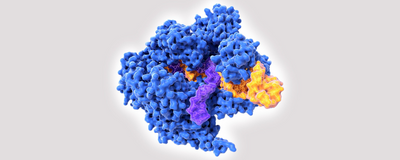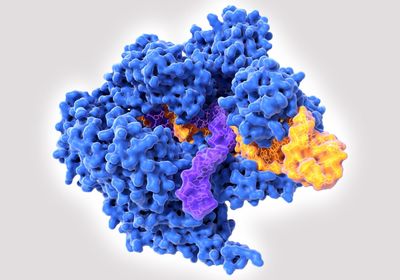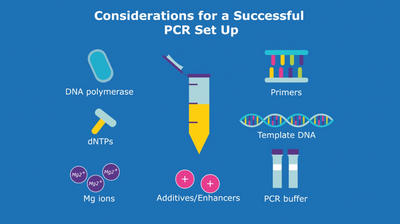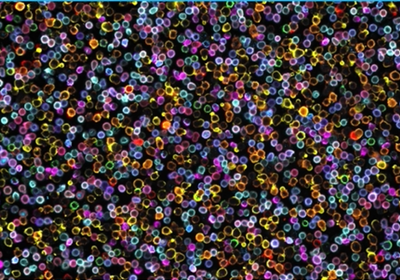ABOVE: © ISTOCK.COM, SELVANEGRA
Groundbreaking clinical trials that could result in powerful new CRISPR treatments against HIV, genetic blindness, and other conditions are now underway, but some concerns around safety remain. One worry is that if CRISPR is put directly into patients’ bodies, they could have severe immune reactions to Cas9, the enzyme with bacterial origins that cuts DNA. Now, a technique that destroys Cas9 in response to an FDA-approved drug has been reported in a recent preprint (1), and the researchers behind it hope that it could eventually be used as a CRISPR kill switch in case of a bad reaction.
“It's a little bit risky when you put a bacterial system into a human body because the immune system just goes nuts,” said Amit Choudhary from the Broad Institute, who led the work. “We need something that under an adverse scenario completely shuts [the system] off or dials it down.”
To achieve that kind of control, Choudhary and his colleagues added a special response element to the Cas9 enzyme and introduced a drug called pomalidomide, which acts as a molecular glue to bring together proteins that would not otherwise interact. In this case, pomalidomide brought the response element into contact with a protein that tagged it and Cas9 for destruction by the cell’s own ubiquitin-proteasome degradation pathway.
Soon, the Cas9 was dismantled – or “shredded,” as Choudhary called it – by the proteasome. The pomalidomide dose controlled how quickly that happened, providing a dial for the Cas9 half-life. In cultured cells, a concentration of one micromolar cleared the gene editor within thirty minutes, a process that usually takes 24 hours (2). As pomalidomide is an FDA-approved drug, Choudhary’s long-term vision is that patients can take a pill to control how long Cas9 stays in their systems.
The team replicated the approach with base and epigenetic editors that use other versions of Cas9, suggesting that it can be used with most CRISPR-based editors. Crucially, their results showed that a shortened Cas9 half-life led to proportionally fewer edits in unwanted places, known as off-target effects, and that the glue can reduce editing activity when used in mice.
Karen Maxwell from the University of Toronto, who was not involved with the work, said that the molecular glue approach was a clever idea, but that it was hard to judge if it is better than or equivalent to other control platforms. “They got rid of off-target effects, but on-target editing went down as well,” she said. “If we have a lot less editing, you’re going to have way fewer off-target effects by definition.”
Where Choudhary’s approach stands out, however, is in its ability to degrade Cas9. Other comparable ways to control CRISPR activity, such as anti-CRISPRs, small molecule inhibitors and light-deactivation, generally block Cas9 rather than destroy it. According to Choudhary, that is probably not going to be enough if a patient has an immune reaction. In fact, some of them could pose an immune threat themselves.
That is an important consideration, agreed Erik Sontheimer from the University of Massachusetts, who was also not involved with the work. “[Immune risk related to Cas9] has not yet been established but it’s certainly plausible,” he said. And there is some evidence that it could become a challenge: A 2019 study reported that most of its 125 participants harbored pre-existing immunity to Cas9, meaning that their immune systems might react to a CRISPR-Cas9 therapy delivered in vivo (3).
Such immunity is not just a safety concern; it could interfere with how well the therapy works. A mouse study from 2018 revealed that pre-existing Cas9 immunity ultimately led to the complete elimination of edited cells (4). According to Avery August, an immunologist at the University of Cornell who was not involved with the main work, the same could happen in people. “If the immune system is mobilized, then some T-cells in the immune response could basically kill off cells [carrying Cas9], having a blunting effect,” he said.
Whether shredding is the solution to Cas9’s potential immune risks remains to be seen. From August’s perspective, only people without pre-existing immunity would likely benefit from it because the degradation pathway it exploits is the same used to present the immune system with fragments of foreign material. In other words, the shredded bits of Cas9 could increase the risk of triggering the immune system if the person has immunity.
For people who do not, he said, “if you degrade the enzymes quickly enough, such that you don’t have enough time to generate such immunity, then that could have a beneficial effect.”
In that case, the glue would be less like a kill switch and more like a cloak of invisibility.
References
- Sreekanth, Vedagopuram, et al. "A molecular glue approach to control the half-life of CRISPR-based technologies," bioRxiv, 2023-03, 2023.
- Kim, Sojung, et al. "Highly efficient RNA-guided genome editing in human cells via delivery of purified Cas9 ribonucleoproteins," Genome Research, 24.6:1012-1019, 2014.
- Charlesworth, Carsten T., et al. "Identification of preexisting adaptive immunity to Cas9 proteins in humans," Nature Medicine 25.2: 249-254, 2019.
- Li, Ang, et al. "AAV-CRISPR gene editing is negated by pre-existing immunity to Cas9," Molecular Therapy 28.6: 1432-1441, 2020.








